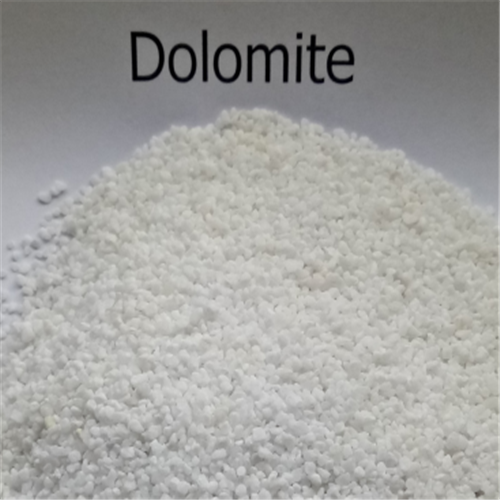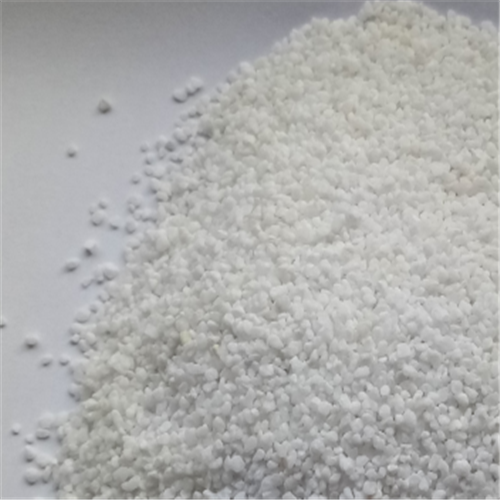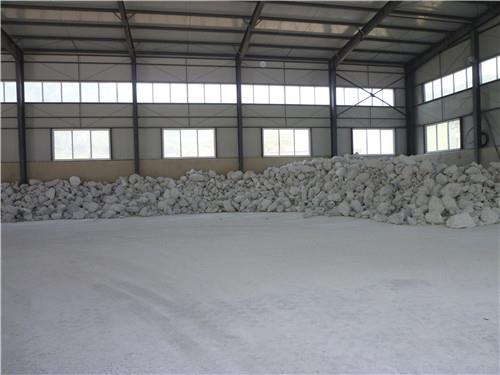Brucite Magnesium Hydroxide HydromagnesiteMagnesite Magnesium Oxide Fertilizer MGO Dead Burnt Magnesite Caustic Calcined Magnesite
Dolomite - Introduction
Detailed Description
Dolomite crystals are trigonal carbonate minerals. The chemical composition is CaMg(CO3)2. There are often the same kind of iron and manganese (instead of magnesium). When the number of iron or manganese atoms exceeds magnesium, it is called iron dolomite or manganese dolomite. Trigonal crystal system, the crystal is rhombohedral, the crystal face is often bent into a saddle shape, and the polycrystalline twin crystal is common. The aggregates are usually granular. Pure to white; gray when iron; brown after weathering. Glass luster. It is the main mineral that makes up the dolomite. Dolomite, which is caused by marine sedimentation, is often produced in layers with the siderite and limestone layers. In lake sediments, dolomite is symbiotic with gypsum, anhydrite, stone salt, potash salt and the like.

Introduction
Dolomite is a carbonate mineral with iron dolomite and manganese dolomite. Its crystal structure is like calcite, often rhombohedral. When it is cold diluted hydrochloric acid, it will slowly foam. Some dolomites emit orange-red light under the irradiation of cathode rays. Dolomite is the main mineral component of dolomite and dolomitic limestone. Dolomite can be used in building materials, ceramics [1], glass and refractory materials, chemicals and agriculture, environmental protection, energy conservation and other fields. Mainly used as a flux for alkaline refractory materials and blast furnace ironmaking; production of calcium magnesium phosphate fertilizer and preparation of magnesium sulfate; and production of glass and ceramic ingredients.

Various quality dolomite products: dolomite ore, dolomite sand 6-10 mesh, 10-20 mesh, 20-40 mesh, 40-80 mesh, 80-120 mesh, dolomite powder 10 mesh, dolomite super Fine powder 140 mesh, 325 mesh, 600 mesh, 1000 mesh, 1600 mesh.
When dolomite is heated to 700~900 °C, it is decomposed into a mixture of carbon dioxide and calcium oxide and magnesium oxide. It is called caustic magnesium marble and easily reacts with water. When dolomite is calcined at 1500 °C, the magnesia becomes periclase, and the calcium oxide is converted into crystalline a-CaO. The structure is dense, the water resistance is strong, and the refractoriness is as high as 2300 °C.
China's dolomite deposits are distributed in carbonate rock series, and the more mineral deposits in the older ages, the more concentrated in the Sinian basement. For example, the Liaohe Group in the northeast, the Sanziqun in Inner Mongolia, and the Jianye Group in Fujian have the output of dolomite deposits. Secondly, the Sinian and Cambrian Middle Dolomite deposits are also extensive, such as the Liaodong Peninsula, Jidong, Inner Mongolia, Shanxi, and Jiangsu, which are also produced by large deposits. The dolomite deposits in the Carboniferous and Permian systems are mostly distributed in Hubei, Hunan, Guangxi, Guizhou and other places.
China's dolomite deposits are rich in resources, and the proven reserves can meet the needs of economic construction. Many deposits have been developed and utilized, and the production areas are all over the provinces, especially in the Dashiqiao and Haicheng areas of Yingkou, Liaoning.
chemical composition
CaMg(CO3)2; may contain elements such as Fe, Mn, Pb, and Zn. Dolomite crystalline state: crystalline body or crystalline aggregate.
Theoretical chemical composition
CaO 30.4%
MgO 21.7%
47.9%
Loss on ignition: 44.5-47.0
Photographic characteristics: Dolomite is a monogonal crystal, negative light; often a heterogeneous aggregate.
Polychromaticity: no weakness, no aggregate.
Refractive index: 1.505 ~ 1.743.
Birefringence: 0.179 ~ 0.184, the aggregate is unmeasurable.
Ultraviolet fluorescence: orange, blue, green, green and white.
Absorption spectrum: no characteristics.
Magnification check: Three sets of complete cleavage can be seen.
dolomite
Special properties: Foaming in cold dilute hydrochloric acid.
Optimization processing: unknown.
The scope of the stone: Laizhou area of Yantai, Shandong, Kuandian area of Liaoning.
FENGCHENG CITY HEQI BRUCITE MINING CO., LTD is registered in Dandong city, Liaoning province. Sufficient talent reserves, proper environmental governance, convenient transportation and communication.We are mainly engaged in the purchase, processing and sales of mineral products.

Main products: magnesium hydroxide flame retardant and brucite powder. Complete specifications of products, welcome to visit our factory guidance.

Since its inception, with "business integrity, standard services, sustainable development, commitment to the community" is the principle of the company. Our company has a good reputation, which is oriented by customers' demands, strives for survival by quality reputation, relying on high-quality products and good services.
Brucite
Magnesium Hydroxide
Hydromagnesite
Magnesite
Magnesium Oxide Fertilizer
MGO
Dead Burnt Magnesite
Caustic Calcined Magnesite
Addr.: Dayanggou Village Jiguanshan
Town Fengcheng City Dandong,
Liaoning, China
Contact: Lianchun Yang
Post Code: 118102
Tel.: 0086-415-8194500
Mobile:15104153702
E-mail:
brucitehq@mail.com
brucite@sina.com
brucitehq@outlook.com


